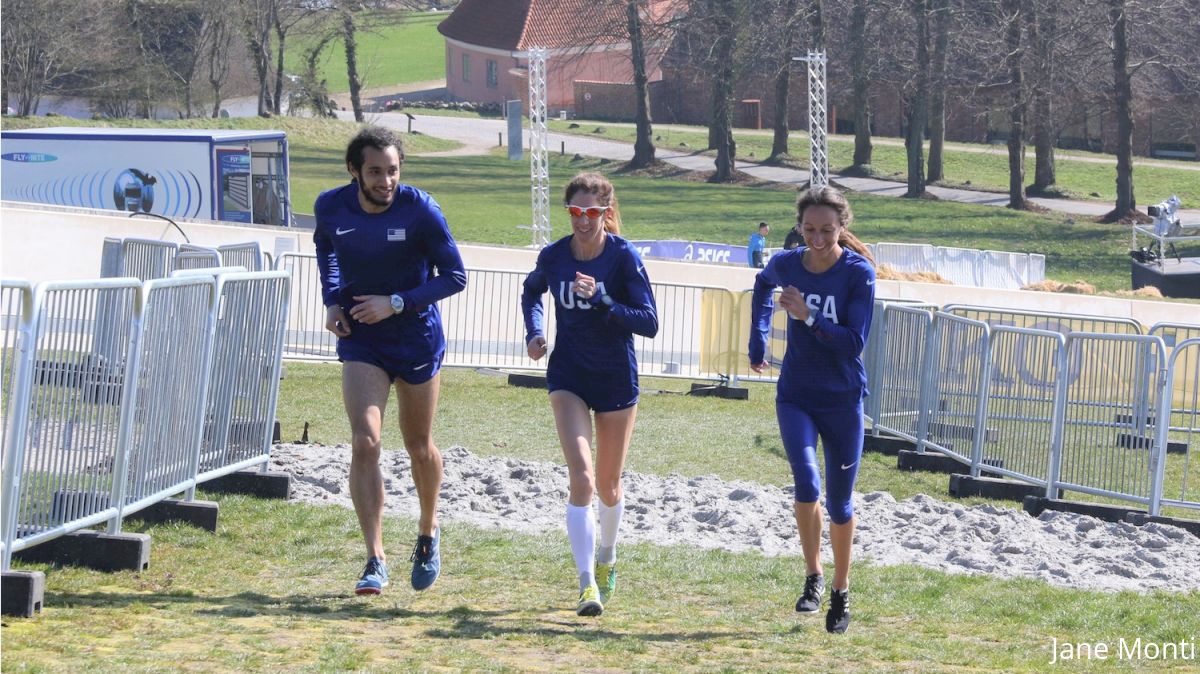At World Cross Country Championships, The Course Is The Real Star
At World Cross Country Championships, The Course Is The Real Star
Jakob Larsen was determined to prepare a venue that would challenge athletes, but also lift fan and media interest—especially outside of hardcore fans.

(c) 2019 Race Results Weekly, all rights reserved
AARHUS, DENMARK (29-Mar) -- Although Saturday's IAAF/Mikkeller World Cross Country Championships here will feature some of the world's greatest distance runners, including continental, Olympic and world champions, the real star of the show will be the exquisitely difficult course designed by local organizing committee president Jakob Larsen. Larsen, who is also the director of the Danish Athletics Federation, was determined to prepare a venue which would truly challenge the athletes, but also lift fan and media interest, especially outside of the sphere of hardcore track fans.
"This has been from day-one about turning people's heads," Larsen told reporters at a packed press conference held today at the glass and concrete Moesgaard Museum the site of Saturday's championships. He continued: "If we manage to make people turn their heads, that is a huge success, not just in the family of athletics itself, but regular people."
Larsen's masterwork is an approximately 2000-meter circuit which features an especially steep (10% grade) climb of the grass roof of the museum, followed by a plunging S-shaped downhill that finishes with a 180-degree banked turn which looks more like a skate park feature than a running path. The circuit, which has mostly a thick grass surface with very few flat sections, also has a water splash, a mud pit, sharp off-camber turns, various sandpits, and even a beer tent (called "Runner’s Valhalla") through which the athletes will run. On each loop the athletes will climb and descend 66 meters (217 feet).
As 582 participating athletes from 67 countries surveyed the course over the last two days, their reactions have varied from admiration and appreciation to outright fear.
"I just loved everybody's reaction when we got here," USA athlete Anne-Marie Blaney told Race Results Weekly at the course this morning. "The hills are way more steep just being here. There was just a lot of nervous laughter when everybody was like, 'What do you think?'"
Larsen, who also directed a very successful edition of the IAAF World Half-Marathon Championships in Copenhagen in 2014, got the idea for holding these championships on the museum grounds a year later after meeting a Moesgaard representative at a conference.
"I was at a conference and the lady from the museum --she was in charge of all of the exhibitions-- she was very passionate about exhibitions and I'm always keen on people having passion," Larsen told Race Results Weekly in an interview. "So, that is kind of where the idea started where she has passion. We can work with that."
As the course began to take shape, Larsen was excited about the design, but was also worried that he would face push-back from those who saw it as too extreme. He even proposed several features which he could not get approved, like a bridge over the course with a DJ playing music while flames shot up beside him.
"I have to say I was nervous about how the teams would respond when they saw the course," he admitted. "But, for now I think the feedback has been very positive."
Typically, an elite man can cover 10 kilometers on a flat course in 28 minutes, and an elite woman can do the same in about 32 minutes. But the winning times in tomorrow's senior races are sure to be far slower than that. The climb up the museum roof is so steep that television broadcasters have installed a "rail-cam" to catch all of the pain up close. During the senior, 10-kilometer races the athletes have to climb the roof five times.
"It was harder than we even anticipated," said USA athlete Courtney Frerichs, the 2017 IAAF World Championships silver medalist in the steeplechase. She added: "Doing that five times is definitely going to be challenging."
Renewing interest in cross country is part of the IAAF's core strategy to promote athletics, officials said. Sebastian Coe, the IAAF president and twice the Olympic 1500m champion, emphasized that cross country was the bedrock event of all endurance running. During his competitive days, coaches emphasized cross country running to build strength for summer track racing, and he lamented the decline in that philosophy.
"It probably goes without saying I love athletics," Coe told reporters today at the press conference. "If I was really going to wear my heart on my sleeve I would say I really love cross country." He continued: "It's one of the few disciplines in our sport where middle distance can meet long distance. For me, cross country has it all; it was the foundation of my career."
Lynn Jennings, the American legend who won three consecutive IAAF World Cross Country Championships titles in 1990, 1991 and 1992, agreed with Coe.
"Every single year for eight straight years I could go world cross with varying results," said Jennings, who is also an Olympic 10,000m bronze medalist. "Cross country was always the mirror I would hold up to see how strong my backbone was."
Geoffrey Kamworor is arguably the biggest star at these championships. The 26 year-old Kenyan, who also won the 2017 TCS New York City Marathon, is the two-time defending champion. He had yet to run a lap of the course here when he spoke to reporters today, but he didn't seem bothered by its difficulty. He was focused on his top opponents, like Uganda's Joshua Cheptegei and Jacob Kiplimo.
"An excitable and enjoyable event is one with stiff competition," he said. "I'm ready for tomorrow."